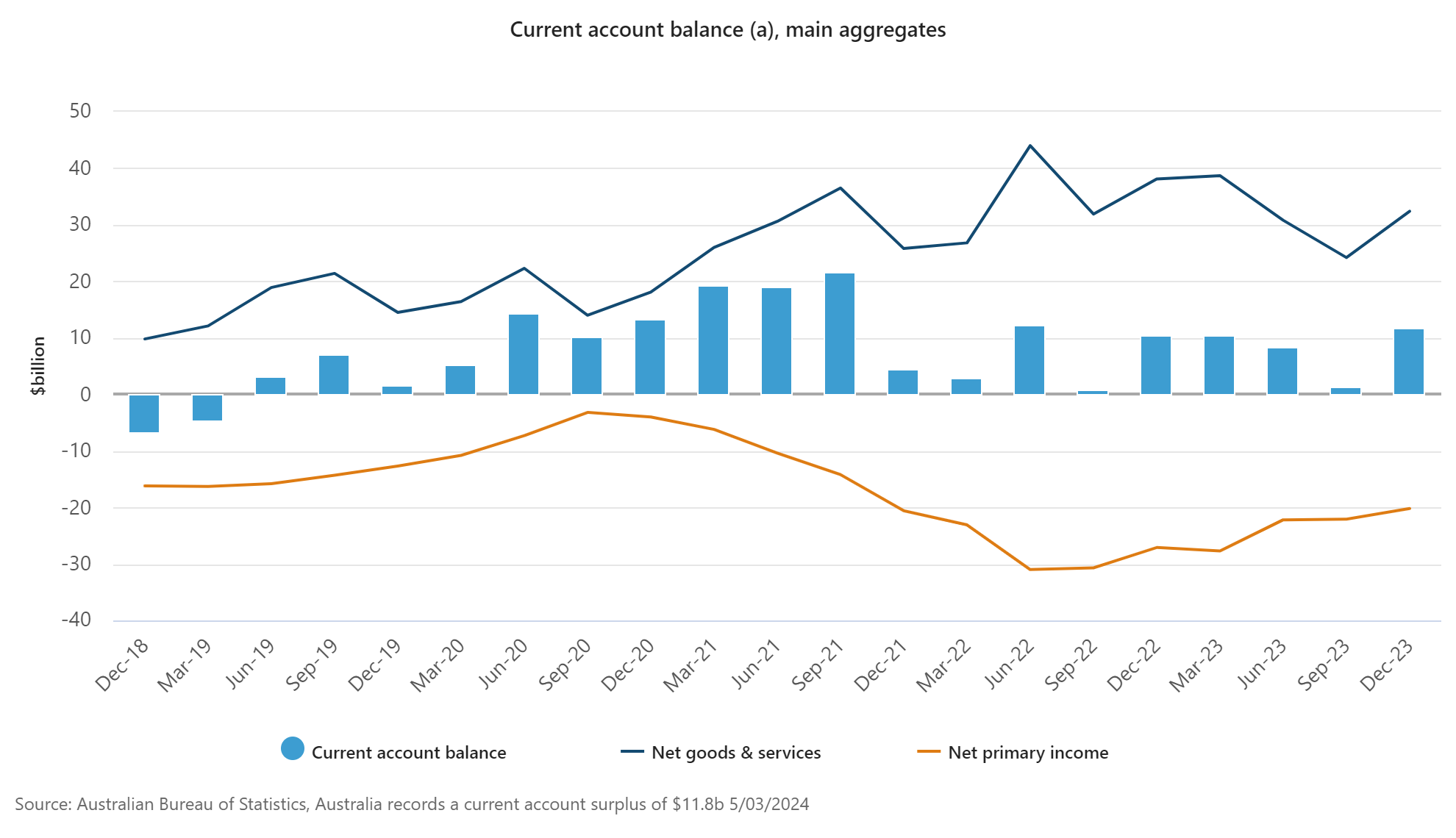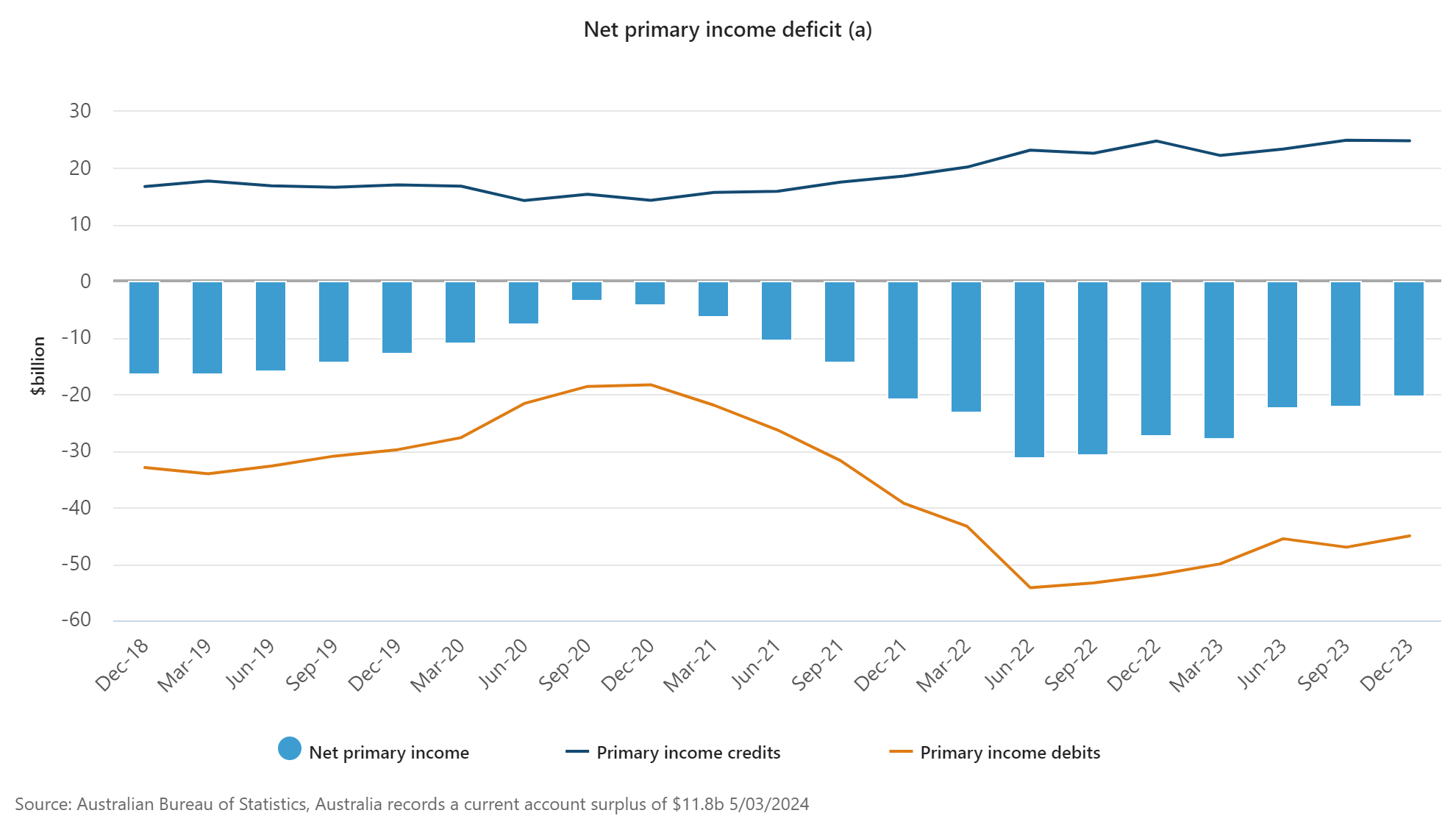Net primary income deficit narrows

There was a substantial increase in Australia’s current account surplus, reaching $11.8 billion in the December quarter of 2023, up by $10.5 billion from the previous period.
This data, published by the Australian Bureau of Statistics (ABS), also showed a reduction in the net primary income deficit, which contracted by $1.9 billion to $20.2 billion, while the balance on goods and services witnessed an increase of $8.2 billion, reaching $32.4 billion.
According to the ABS, the expansion in exports, which grew by 3.1%, was largely influenced by higher prices for exported goods, especially coal and metal ores. These sectors saw increases in both the volume and price of exports, although gains were partially offset by the performance of rural goods and non-monetary gold exports.
The country’s terms of trade also improved, marking a 2.2% increase, despite a year-over-year decline of 3.9%. 
ABS also reported that service exports experienced growth, with a 1.3% increase, led by the travel services sector. This sector saw a significant uptick in activity, with a 61.8% increase compared to December 2022 and a 16.1% rise over December 2019, the last quarter before the onset of COVID-19 travel restrictions.
On the import side, Australia witnessed a 2.6% decline in goods and services, with travel services experiencing a 7.8% decrease as Australians opted for closer destinations and spent less on overseas travel.
Goods imports fell by 1.8%, influenced by a drop in passenger vehicle imports, following a period of strong imports earlier in the year due to the clearing of order backlogs and improved wait times for cars.

In the December quarter of 2023, Australia witnessed its narrowest primary income deficit since the September quarter of 2021, amounting to $20.2 billion. This improvement was primarily due to a decrease in primary income debits, reflecting lower profits on foreign direct investment.
The financial account for the same period recorded a deficit of $9.6 billion. This was attributed to net equity inflows of $13.3 billion, which were partially negated by net debt outflows of $3.7 billion.
The economy also saw a $3.9 billion increase in net trade, which is anticipated to boost the December quarter’s GDP quarterly movement by 0.6 percentage points.
Regarding Australia’s international financial position, the net international investment liability widened to $836.6 billion this quarter, marking a $25.5 billion increase from the previous period. This was due to a larger decrease in Australia’s foreign assets compared to its foreign liabilities.
The country’s net foreign equity asset position experienced growth, rising by $13.3 billion to $369.6 billion. Net foreign debt liability position saw a significant increase, up by $38.8 billion to $1,206.3 billion.
“The current account surplus reflected a higher trade surplus, driven by mining commodity exports,” said Grace Kim, ABS head of international statistics. “Meanwhile, the net primary income deficit narrowed.
“The prices of goods exports rose for the first time in 2023, up 3.5%, led by metal ores and coal prices. Despite this rise, the price of exported goods was 8.6% lower compared to this time last year.”
Want to be regularly updated with mortgage news and features? Get exclusive interviews, breaking news, and industry events in your inbox – subscribe to our FREE daily newsletter. You can also follow us on Facebook, X (formerly Twitter), and LinkedIn.



